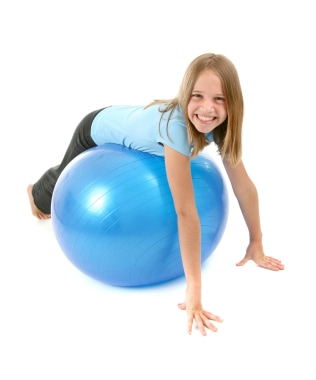by Tammy Wheeler, MS., OTR/L, and Diana Henry, MS., OTR/L
 All teachers want their students to succeed. Many teachers, however, are overwhelmed with the huge responsibility of providing quality education for students with different learning levels and needs. Without specific training, educators may misinterpret sensory processing deficits and/or attention deficit-like behaviors and may think that referrals for medications are the only solution.
All teachers want their students to succeed. Many teachers, however, are overwhelmed with the huge responsibility of providing quality education for students with different learning levels and needs. Without specific training, educators may misinterpret sensory processing deficits and/or attention deficit-like behaviors and may think that referrals for medications are the only solution.
There are alternatives to drugs, fortunately. These “over the counter” options are low cost and enjoyable, have no side effects, and can help every student succeed.
Magic potions? No, sensory-motor activities!
Equipped with the knowledge of how sensory-motor development impacts learning and behavior, occupational therapists are providing “user-friendly” OT strategies to teachers, students and parents. The therapists show educators how activities can be easily integrated into the classroom to help students learn and feel good about themselves.
We can all see that children love movement; in fact, they often crave it. There are many types of movement. Rhythmic, repetitive movements, such as rocking back and forth, can be relaxing. Gentle up and down movements, such as bouncing on a therapy ball, can be alerting. While the neurobiological explanations for these varying responses are complicated, we can easily observe the behavioral outcomes when students perform specific activities in the classroom.
Listed below are some strategies included in Tool Chest For Teachers, Parents, & Students: A Handbook to Facilitate Self-Regulation, by Diana Henry. The handbook accompanies two videos: Tools for Teachers and Tools for Students.
Movement Tools can be used as either “get going” or calm-down activities. Because movement is important for children to work at an optimum level, the attention span of “fidgety kids” lengthens. The rhythmic movement pattern of “The Fragile Egg” activity is particularly useful immediately before a period when students are expected to sit still and attend. Have the students gently rock back and forth while clasping their arms under their knees, curling up so that the knees are close to the chest, and the chin is tucked.
Muscle Tools can be used to develop upper body control for sitting and writing. “The Rocking Puppy” engages muscles in the head, neck, shoulders, hands, fingers and hips. Have students get down on hands and knees and rock slowly, forward and back.
Position Tools can teach the student how to measure and check for proper seating. One of these activities is taking turns sitting on a “ball chair.” This piece of equipment is a therapy ball, which students understand is a tool, not a toy. Using the ball at their desks can improve their posture and handwriting skills.
Quieting Tools use touch pressure and slow, rhythmic, repetitive movements that can relax the body and help students make smooth transitions from one activity to another. Have the students take turns lying face-down on a gym mat while someone else piles large beanbag chairs on top and pushes down, applying firm touch. Another idea is to roll a large therapy ball along the entire back side of a student who is lying on a mat. Apply gentle pressure from the upper body toward the feet.
Hand Fidgets can help relieve stress, promote concentration, and even facilitate eye contact. Provide “fidgets” that students may manipulate, such as putty, balloons stuffed with flour or sand, and squishy hand balls. Other strategies include Writing/Cutting Tools, involving in-hand manipulation activities to develop hand skills and as warm-ups for writing; Mouth Tools, providing oral stimulation that improves focus and helps the whole body work better; and Eye, Ear, and Nose Tools, too.
Educators who have tried OT strategies find that students are more likely to maintain their zest for learning, that families gladly use the tools at home, and that they themselves are more enthusiastic about teaching. They have discovered that the benefits begin when they incorporate the tools right from the beginning. Of course, it is important to collaborate with an OT and to try new strategies in the classroom as students’ needs change. With the right tools for the job, educators are better equipped to face the many challenges of teaching today.
“Tool Chest,” a product of Henry Occupational Therapy Services in Arizona, is available in English, Spanish, German and French.
